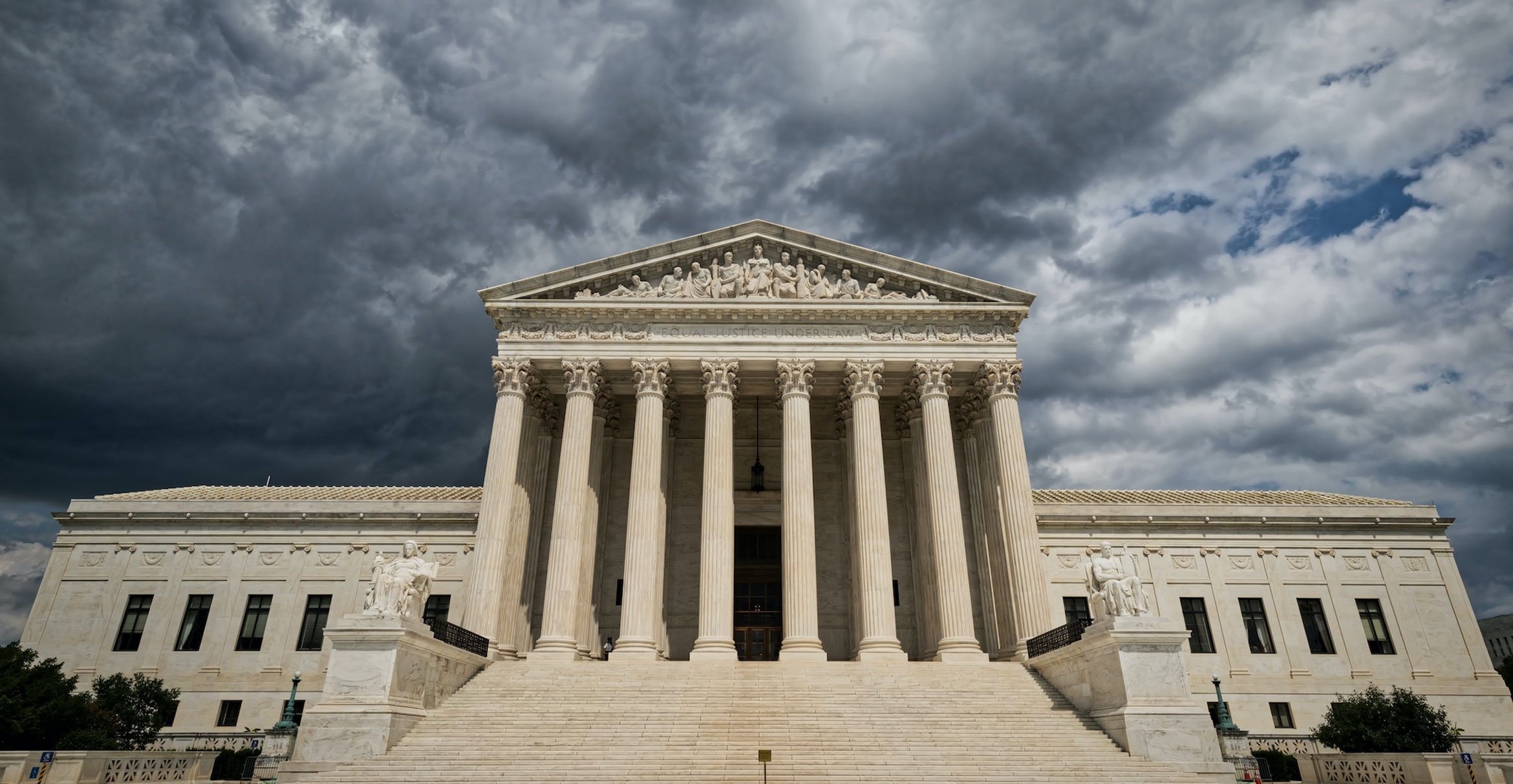
Scholars reflect on Supreme Court ruling and higher education in the post-affirmative action era
In its recent ruling against admissions policies that take race into account at Harvard University and the University of North Carolina, the U.S. Supreme Court reversed its decades-long position on affirmative action, further complicating the challenges faced by institutes of higher education to increase, or even maintain, diverse student bodies.
Leading the court’s conservative supermajority, Chief Justice Roberts stressed that admissions policies that take race into account unconstitutionally violate the guarantee of equal protection under the 14th Amendment. In dissent, Justice Sonia Sotomayor wrote that the ruling was “devastating” and that the court was “further entrenching racial inequality in education.”
For perspective on the court’s position and UC Santa Barbara’s place in the post-affirmative action era, The Current caught up with political science professor Pei-te Lien and professor Jeffrey Milem, who has served as the Jules Zimmer Dean of the Gevirtz Graduate School of Education since 2016.
Lien has been teaching affirmative action for nearly 30 years in courses on Asian American and U.S. racial politics. Her research focuses on political action and representation among Asian and other nonwhite Americans. She is the co-founder of the Asian Pacific American Caucus, a related group of the Washington, D.C.-based American Political Science Association.
Milem specializes in racial dynamics and equity in higher education. His scholarship on affirmative action includes a study of the University of California v. Bakke decision, and commissioned research for the Harvard Civil Rights Project and the American Educational Research Association. In 2003, his published work was cited by the Supreme Court in Grutter v. Bollinger, which upheld the University of Michigan’s ability to include the consideration of race in law school admissions.

Together with more than 1,200 other social scientists and scholars on college access, Asian American studies and race, Lien and Milem signed an amicus brief in support of Harvard University and the University of North Carolina.
The Current: What was your initial reaction to the ruling?
Pei-te Lien: For the majority of the nation concerned about equal opportunities for Black, Hispanic, Native American and other structurally disadvantaged students to enter elite colleges, it was an earthshaking decision. The Supreme Court had previously upheld the use of race as a factor in school admissions after the Bakke decision in 1978. Since then, and despite repetitive challenges, race-conscious admissions practices have been legal at the federal level.
One fears there will be cascading effects of banning race in law school admissions and in other areas of affirmative action that cover employment and business contracting. Gender is another protected category in school decisions, and this decision may impair any efforts to advance gender and sexuality rights moving forward, beyond the abortion ban. Also, dismantling race-conscious affirmative action in college admissions may impair minority access to political representation by dismantling race-conscious redistricting efforts. So this decision has implications beyond race and racial justice.
The UC president said in a statement that the use of race in admissions has been a valuable practice that has increased diversity. Overall, what have been the measurable benefits of affirmative action?
Jeffrey Milem: They are abundant and profound. On an individual level, a review of the research on the benefits of diversity suggests that there is an important relationship between an emphasis on diversity and important student outcomes. Simply put, there are numerous ways in which individuals benefit from their interactions with diverse information and ideas and people while they are in college. Diversity also enhances the effectiveness of an institution or organization. For the whole of society, having a diverse workforce and student body contributes to the achievement of democratic ideals of equity and access, the development of an educated and involved citizenry and the provision of services to groups who are badly underserved.
What have been the imperfections of affirmative action?
Milem: The imperfection from a public policy viewpoint is that despite all of the work that has been done to establish abundant empirical evidence on the multiple benefits of diverse universities — plus the compelling data showing that racial equity and fair access to educational opportunities are still a very long way from being addressed — we have failed to protect the right of college and university leaders to use race as one of many factors in college admissions.
One shortcoming I see from an educational perspective is our failure as educators to establish all of the conditions that are necessary to produce the educational benefits that can be achieved. We are learning, but we have been slow in learning how to do this.
Lien: For nearly 30 years, I have reminded my students that affirmative action is not another anti-discrimination measure. We can also keep in mind that affirmative action is a temporary measure and has been used as a ubiquitous, necessary, but also convenient fix to the remnants of systemic racism and structural inequality in education, employment, business contracting and other prized opportunities.
Did the ruling surprise you?
Milem: Given the composition of the court, the ruling did not surprise me. Even though I anticipated this outcome, I underestimated the profound hurt and disappointment I felt when it was announced.
The court dismissed the compelling evidence of systemic disadvantages that many students of color and first-generation and immigrant students continue to face, and it dismissed the mountain of empirical evidence documenting the numerous benefits that diversity in higher education has for students, institutions and the private sector. Our society supports the use of race as a consideration in admissions, and there is abundant compelling evidence which supports the continued use of race as one of many factors in admissions. At the same time, there is paucity of any reliable evidence that supports the argument to end affirmative action. This decision violates every tenet of what I believe as a scholar and it poses a deep threat to our citizens and our democracy.
Since 1996’s Proposition 209, consideration of race in admissions has been banned in California. Since then, the UC has used a “comprehensive review process.” Can it serve as a template?
Lien: UCSB was the first UC campus to adopt comprehensive review in our admissions decisions. We have developed a sophisticated system that considers many factors in one’s personal, family and contextual background that may impact one's socialization and academic performance. The UC system also adopted a “percent plan” which currently guarantees admission to California resident applicants who are either in the top 9% of high school graduates statewide or the top 9% of graduates from their own high schools. I think this combined system has contributed to the distinction of UCSB being the first Hispanic-serving institution among the nation’s top elite institutions of higher education. We have moved beyond the simple consideration of a racial category, which most Californians and increasingly more Americans of all origins denounce. So as the nation laments the death of affirmative action, we have moved forward beyond affirmative action as we know it, and with some success.
Is the UCSB model the template for the post-affirmative action era? Yes and no. Whereas we have developed a system of comprehensive review in evaluating applicants, our admissions office also works diligently to recruit under-represented minority students. We recently abandoned standardized SAT testing as part of the UC directive. We’ve established partnerships with community colleges and four-year degree programs in the California State University system to recruit transfer students. And we offer generous financial aid and scholarships to support under-represented and first-generation students.
Overall, it is not affirmative action, but a strong and persistent commitment to diversity, equity and inclusion that matters.
Moving forward, what now?
Milem: Despite this devastating ruling and the backlash against diversity in schools and colleges, it is clear to me that educators must take a much more active role in addressing both the quality of education delivered for an increasingly diverse nation and the ongoing power of race, class, gender, immigrant status and sexual orientation in shaping life chances in our society. We must do the difficult work to enact diversity on our college campuses so that we are able to achieve its benefits, but more importantly, so that we can finally achieve what to date has been one of our nation’s most elusive goals — educational equity.
Lien: One possible bright side of the recent court decision is to compel people to seek solutions to the root cause of racial and ethnic inequality, to invest in the infrastructure of K–12 education and to find alternative and less controversial measures to help achieve the goal of diversity, equality and inclusivity. The UC system — and especially UCSB — has a head start in this, but it’s far from enough. It is not sufficient to push for teaching a more diverse version of the nation’s racial and ethnic history. The key is to teach and learn American history critically and help students see that the system still largely sustains white privilege and condones racial inequality in contemporary society.
Keith Hamm
Social Sciences, Humanities & Fine Arts Writer
keithhamm@ucsb.edu



